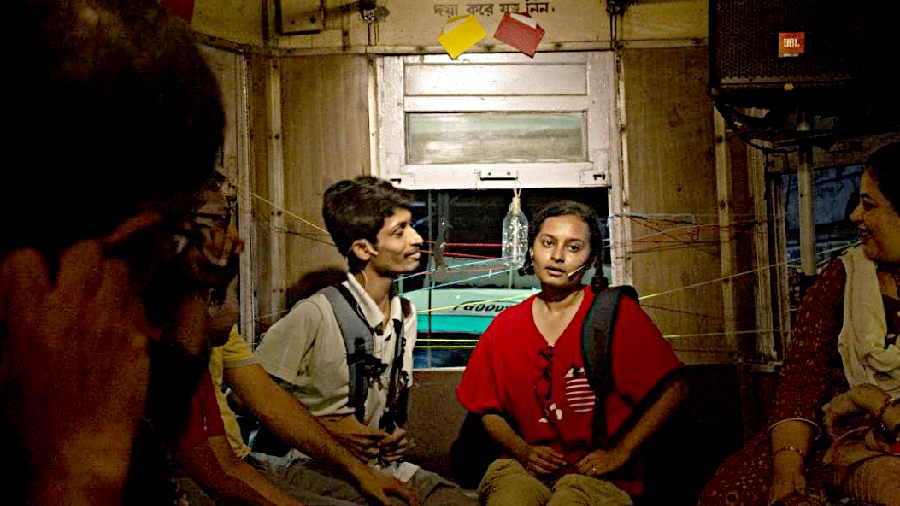It would be felicitous to write about how the crimson sky melted, the busy traffic blared through melodious tunes, a sudden shower veiled our vision, the lights went out, a crowd of hoardings gaped and stories fluttered as a tram spiralled through the heart of the city that evening. A young group of actors, musicians and stage managers joined the members of the audience on a tram ride to tell a story of love, hope, nostalgia and loss in the performance of Urochithi. As I mull over this performance and try to bring my critical insight to it, I intuitively feel the need to first acknowledge the attempt by the young theatre group, Somporko, to create site-specific performances. They engage with spaces in the city that are imprinted with memories from a past that refused the passage into the digital lives of our times. The tram ride was interesting in the way the outside space interacted, disrupted and flowed into the narrative.
A site-specific work is often marked by a sense of precariousness that opens up possibilities of accidental moments and unexpected improvisations. But in telling a linear story woven with musical interludes, Urochithi loses sight of the immense possibilities that incidental happenings can offer. On the contrary, it felt that enactments were demanding an insulated space of their own. Except for the nostalgia of lost innocence, the tram ride is not built into the story. The show demanded a meticulous design and technical coordination that appeared to have overwhelmed the performers.
It might be magical if the piece resigns from its commitment to representative enactments and the performers are trained to embrace ‘presence’ and the vulnerability that a space offers. The telling is evocative in the way it touches upon nostalgia, but the story could have been more layered rather than repetitive. Urochithi and Somporko’s other works deserve a growing audience in their honest performative exploration of Calcutta.










